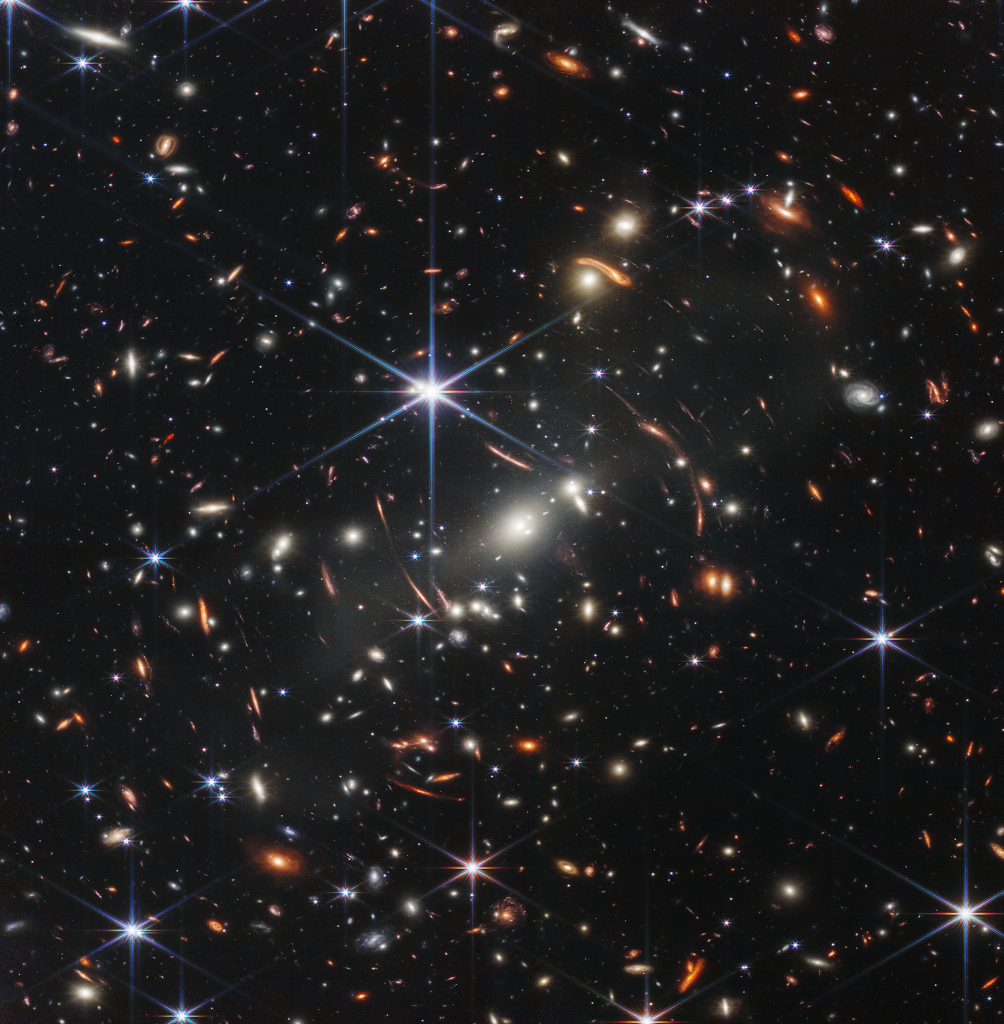2023年7月15日
Webb’s First Deep Field
Image Credit: NASA, ESA, CSA, STScI, NIRCam
Explanation: This stunning infrared image was released one year ago as the James Webb Space Telescope began its exploration of the cosmos. The view of the early Universe toward the southern constellation Volans was achieved in 12.5 hours of exposure with Webb’s NIRCam instrument. Of course the stars with six spikes are well within our own Milky Way. Their diffraction pattern is characteristic of Webb’s 18 hexagonal mirror segments operating together as a single 6.5 meter diameter primary mirror. The thousands of galaxies flooding the field of view are members of the distant galaxy cluster SMACS0723-73, some 4.6 billion light-years away. Luminous arcs that seem to infest the deep field are even more distant galaxies though. Their images are distorted and magnified by the dark matter dominated mass of the galaxy cluster, an effect known as gravitational lensing. Analyzing light from two separate arcs below the bright spiky star, Webb’s NIRISS instrument indicates the arcs are both images of the same background galaxy. And that galaxy’s light took about 9.5 billion years to reach the James Webb Space Telescope.
Tomorrow’s picture: view with a thrill
韦伯的首张深场影像
影像提供: NASA, ESA, CSA, STScI, NIRCam
说明: 这张令人赞叹的红外光影像,是在1年前韦伯太空望远镜刚开始探索宇宙时发布的。这幅呈现南天飞鱼座方向早期宇宙的影像,是由韦伯太空望远镜的近红外光相机,使用12.5小时的曝光时间所拍摄。其中,带六出芒的恒星近在我们银河系之内。这种绕/衍射图案,是韦伯望远镜用18方六边形镜片合成6.5米直径主镜来成像的特征标记。而拥挤在视野里的数千个星系,都是离我们约46亿光年的遥远星系团SMACS0723-73之成员。此外,散布在这幅深场各处的光弧,则是更遥远的星系。他们因星系团以暗物质为主的质量之引力透镜效应,身影发生了扭曲和放大。经由分析最明亮带芒恒星下方的2道分立光弧,韦伯的近红外成像与摄谱仪(NIRISS)指出这2道光弧来自同一个背景星系。而那个星系的光,大约经过95亿年才抵达詹姆斯·韦伯太空望远镜。
明日的图片: view with a thrill



